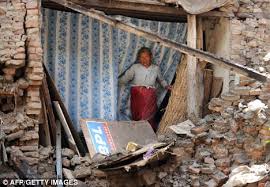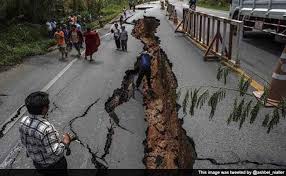

The death toll from the earthquake that struck Nepal on 24 April has passed 6,000, and thousands are still missing. The latest police report confirmed 6,260 fatalities, with 14,000 injured and thousands unaccounted for.
A delegation of European Union in Nepal said 1,000 people from the EU were missing and 12 were confirmed dead. It speaks about the sheer extent of the destruction of the 7.8-magnitude quake.
Thousands of villages are devastated, with up 90 percent of clinics and schools in some districts rendered unusable.
Rebuilding Costs
Ram Sharan Mahat, the Nepalese finance minister, said at least $2billion) would be needed to rebuild homes, hospitals, government offices and historic buildings.
Mahat appealed for help from all international donors. A large number of ancient monuments and important cultural buildings will have to be restored, if they are not demolished. Palaces in Kathmandu have been damaged and cracked.
Hundreds of thousands of are made homeless by the quake. They are yet to receive aid because of logistic bottlenecks, poor infrastructure and a chaotic government response.
A local leader said people are living in appalling conditions. “There are still injured there who have not been treated. Whole villages are flattened. They need tents very badly,” said Kempo Chimed Tsering.
But in Chhatrepati, a village 16 miles (26km) west of Kathmandu in Dhading district, residents were angry that aid that had not yet reach them. Of 47 houses, none is now habitable. While tents have been provided to those with deceased relatives, other survivors have been left without support.
“You are the first one to come here. Neither the government nor any aid agencies have looked after us,” said Mohan Bahadur Thapa, 48, yelling with anger.
“We are cooking food in this open space for at least 23 people of my family,” he added. “If they can’t give us any support they could have come and at least ask and see how we are living.”
EU ambassador Rensje Teerink said the unaccounted Europeans were mostly tourists in the Langtang and Lukla areas. Langtang is a trekking region to the north of Kathmandu that has been hit by a huge avalanche and mudslides, while Lukla is the jumping off point for walkers and climbers making the nine-day trek to Everest base camp.
Diplomats are finding it hard to trace the missing because many backpackers do not register with their embassies when they arrive in the country.
Emergency teams have mainly been pulling bodies from the rubble, a task made all the more perilous by more than 70 aftershocks, the strongest measuring 6.9 magnitude, the Indian meteorological department in Delhi said.
Large numbers have left Kathmandu on free buses provided by the government, often to check on relatives in other regions.
The weather has cleared over much of the country, allowing rescue and relief missions to be stepped up. Much of the famous Khumbu valley, around Everest, had been cut off by bad weather for several days. Flights have now resumed.
The British and Chinese governments have said they are sending additional helicopters, and on Thursday, a group of Gurkhas serving in the British army arrived in the capital to lend a hand with the recovery. The soldiers from the Queen’s Gurkha Engineers Unit set up a portable water purification unit on the grounds of what used to a royal palace in Kathmandu.



